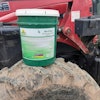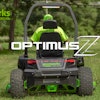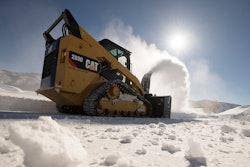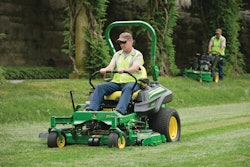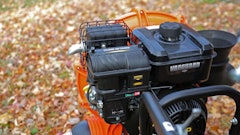
The best part about visiting your service technician is often the witty banter, not the bill or time out of your day.
To avoid the time and expense of small engine repairs, we’ve compiled expert advice from top manufacturers to keep your small engines running smoothly throughout the season.
There are several simple steps contractors can take to stay safe and operational when heading out to the next job. Here is what some of the experts had to say:
Check your owner’s manual: “The most important rule of thumb is that consumers should keep their product manuals handy to check for specific information related to the proper care and maintenance of their equipment,” says Elisha Lipscomb, senior marketing strategist, lawn and garden, for Honda Power Equipment. “For example, before making that first cut of the spring season, be sure to know and understand the maintenance requirements for your lawn mower, tiller or trimmer—including the general-purpose engine that powers the model in question.”
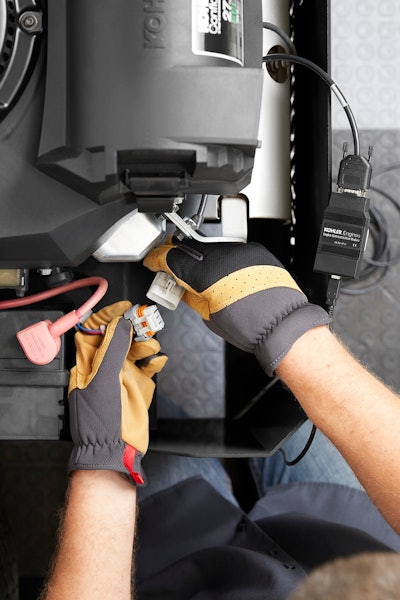 “Check your connections,” says Scott Mack, senior service specialist, KOHLER Engines. “Engines today need a good battery to keep the computer operating properly. That means good, clean connections everywhere.”KOHLER
“Check your connections,” says Scott Mack, senior service specialist, KOHLER Engines. “Engines today need a good battery to keep the computer operating properly. That means good, clean connections everywhere.”KOHLER
Changing the spark plugs: “I change my spark plugs at the end of every season,” says Scott Mack, senior service specialist, KOHLER Engines. “Most owner’s manuals recommend replacing the spark plug every 500 hours. Some commercial users will run their equipment well beyond this time each season, so you’ll need to change the spark plug more often. An OEM maintenance kit usually includes everything you need: oil and oil filter, air filter, fuel filter and spark plugs.”
Check battery connections: “Check your connections,” Mack says. “Engines today need a good battery to keep the computer operating properly. That means good, clean connections everywhere.”
Changing the air filter: “Change your engine’s air filter at least as often as recommended in your owner’s manual,” says Ken Logan, technical instructor III, Kawasaki Motors Corp., U.S.A. “In severe conditions, air filter replacement may be needed more often. Attempting to clean your engine air filter by blowing the debris out with compressed air can actually damage the air filter and allow dust and debris to enter the intake system and severely reduce engine life.”
Checking the oil: “Proper care of any piece of outdoor power equipment starts with understanding and maintaining what powers the product,” says David Bush, senior marketing strategist, engine, generator, pump and snow products, for Honda Power Equipment. “When it comes to four-stroke, gasoline-powered engines, whether for commercial or consumer applications, Honda offers a number of tips to observe to keep power products running smoothly and efficiently.” Bush recommends:
- Check the oil level. Start by removing the dipstick, wiping the oil from it, and inserting it back into the engine, he says. Be careful to not to screw it in. Then, remove the dipstick to check the level. Add oil if necessary. Oil should be changed once per season or based on recommended intervals found in the owner’s manual if the equipment is used more frequently. If you changed the oil before storing the equipment for the winter, another oil change is not necessary.
- Small, air-cooled engines may consume oil rapidly. Low oil levels can lead to an engine seizure, which would require an engine rebuild or replacement. Failing to change the engine oil and check/clean/replace the air filter regularly can result in rapid engine wear, especially if a lawn mower, for instance, is used in dusty conditions.
- Inspect for loose bolts and fasteners as well as fuel and oil leaks. Give the engine a quick, 60-second look for any fluid leaks, or loose or missing parts. This inspection may require tilting the equipment to see all sides of the engine to check the lower crank seal. And, whenever tilting an engine, it is important to always tilt it away from the carburetor side. This practice prevents any oil or gas saturating the air filter and possible fuel leakage.
Changing your own oil: When changing your own oil, make sure to use an oil recommended by the manufacturer.
“Use original equipment manufacturer (Kawasaki, in our case) replacement parts to ensure proper fit and engine protection,” Logan says. “Using the correct oil in your Kawasaki engine is very important. Kawasaki engine oils are formulated specifically for air cooled, high temperature conditions, very different than an automotive engine oil. We like to say, ‘motor oil is not mower oil.’”
Changing the oil is a low-cost option to help extend the life of the engine.
“Use a premium oil that is recommenced for the engine,” Miller says. “As an example, Vanguard oil is a full-synthetic oil that will maintain the engine life in the toughest of commercial environments. We do not recommend using automotive oil, since automotive oil is not specially-formulated for small engines.”
An oil change is recommended every 100 hours or so, but the frequency of oil changes may vary by climate.
“Oil breaks down easier when the temperature increases, so if you’re in a warmer climate, I would suggest doing this maintenance more often,” Mack says. “During dry, dusty seasons you also need to check the air filter more often and during leaf pick-up be sure the air intake on the engine fan stays clear to allow fresh air to cool the engine.”
To prevent spillage, Mack suggests putting oil in the filter before installing.
“One tip I’ve learned over the years to prevent spillage is to be sure to put oil in the filter before installing,” he says. “If you fill the oil to the top of the filter, the oil will be pulled into the filter material within two minutes and can be installed without spilling, even mounted sideways.”
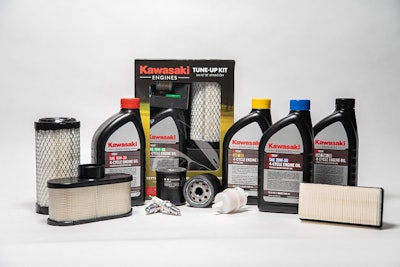 “Use original equipment manufacturer (Kawasaki, in our case) replacement parts to ensure proper fit and engine protection,” says Ken Logan, technical instructor III, Kawasaki Motors Corp., U.S.A.Kawasaki
“Use original equipment manufacturer (Kawasaki, in our case) replacement parts to ensure proper fit and engine protection,” says Ken Logan, technical instructor III, Kawasaki Motors Corp., U.S.A.Kawasaki
Watch the ethanol: “It’s also important to make sure the fuel you are using doesn’t have too much ethanol, which can cause the engine to run poorly,” Mack says. “Most engines can only accept up to a 10 percent ethanol blend (E10). Any amount of ethanol will pull moisture from the air if not stored in a sealed container. This can cause buildup within the engine, as well as corrosion, which can prevent your equipment from functioning properly.”
Remember the fuel filter: “The fuel filter and engine itself should be inspected often,” Mack says. “A clogged fuel filter will significantly decrease the engine’s fuel efficiency and performance. While it’s important to follow the manufacturer’s recommendations, a good rule of thumb is to change the filter every 200 hours. Also, after each use be sure to remove any dirt or loose debris which may have accumulated on the engine during the day.”
Draining the tank at the end of the season: “Draining the fuel is more critical for equipment that will be stored for more than a year,” Miller says. “However, the use of fuel stabilization is as effective for equipment that is used within a 12-month period. Using fuel stabilization in every tank will avoid expensive repairs and eliminate the need to drain the fuel tank before storage.”
Small engine transport: “When transporting small-engine equipment, be sure to turn off the ignition switch to avoid mixing fuel and oil when the equipment is transported and ‘bouncing down the road,’” Miller says. “The Briggs & Stratton Vanguard Single Cylinder horizontal shaft engines include a patent-pending TransportGuard feature that integrates a single-action fuel and ignition shut-off switch to prevent oil and fuel from mixing during transportation.”
Similarly, Mack suggests turning off the petcock valve on the tank.
“When a unit is transported, especially on an open trailer, you should close the petcock on the tank,” he says. “If the engine shuts down with both valves slightly open on one cylinder, air may flow through the carburetor and deliver fuel. If this happens over a long ride, you can deposit fuel into the crankcase and dilute the oil.”
Small engine storage: “One of the easiest and quickest ways to damage gas-powered equipment is by using old fuel or fuel that has not been recommended for use,” Mack says. “Stored fuel is likely to have broken down over the colder months or after periods of inactivity and can go bad in as little as 30 days. We recommend using fresh fuel all the time. Purchase gas in smaller quantities and store it in clean, sealed containers.”
He also suggests a quick inspection in the spring, to look for unwelcome guests and to check the battery.
“I do suggest checking your engine to be sure a rodent didn’t build its winter home under the engine housing and to make sure the battery is fully charged and in good shape for the season,” he says. “You may even want to use a battery tender during storage to keep it operational over long periods of inactivity.”

Know when to seek professional help: “The owners of outdoor power equipment should not tackle maintenance if they’re not comfortable doing so,” Bush says. “The average owner should be able to do the maintenance items listed in the product manual such as changing the oil, spark plug, and air filter. A more mechanically inclined person with the proper tools and a shop manual could adjust the valves and adjust the engine speed. Basically, an owner should look at the maintenance need and decide if he or she is truly capable of performing the task at hand. If you’re in doubt, it’s advisable to take the product to a dealer.”
Knowing what to look for when it comes to your small engine fleet can make all the difference. A little prevention periodically throughout the season can save the headaches and downtime that come with equipment repairs.


